Ralph Guggenheim (born June 6, 1951) is an American video graphics designer and film producer. He won a Producers Guild of America Award in 1995 for his contributions to the film Toy Story .
Ralph Guggenheim (born June 6, 1951) is an American video graphics designer and film producer. He won a Producers Guild of America Award in 1995 for his contributions to the film Toy Story .
He was born in New Rochelle, New York to Hanneleis Feibelmann, a German-Jewish Holocaust survivor, and Jules Guggenheim, a Swiss-born businessman. Guggenheim excelled in his studies at New Rochelle High School and earned admission to Carnegie Mellon University. At Carnegie Mellon University, Guggenheim became one of the first students in Dietrich college to self-define a major in film, [1] and went on to create a documentary about the Robotics Institute in the School of Computer Science. Creating the documentary exposed him to the 3D research at the time and fostered his interest in continuing on in his Masters at CMU in the School of Computer Science. Guggenheim stayed in Pittsburgh and graduated in 1977 with a Masters in Computer Science.
After his time at CMU, Ralph worked for the New York Institute of Technology Computer Graphics Lab. He was soon contacted by Lucasfilm and moved to California in 1980. During his time at Lucasfilm, Guggenheim developed EditDroid, which proved to be a revolutionary film-editing system. After his research lab at Lucasfilm was sold to Steve Jobs and renamed Pixar, Guggenheim continued to work in the world of graphics and animation. Guggenheim, a respected founder of Pixar, eventually became Vice President of Feature Animation and co-produced Toy Story alongside Bonnie Arnold. [2] Guggenheim left the company in 1997 after Disney forced Pixar to remove him as producer from Toy Story 2 .
Since his time at Pixar, Guggenheim has worked as an executive at Electronic Arts. After his time at Electronic Arts, Guggenheim started Alligator Planet LLC with three other partners. Guggenheim is currently the CEO of Alligator Planet.
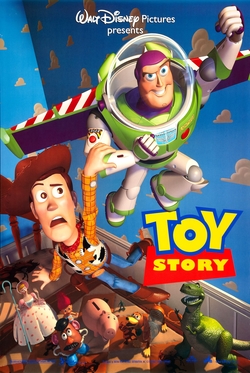
Toy Story is a 1995 American animated comedy film produced by Pixar Animation Studios for Walt Disney Pictures. It is the first installment in the Toy Story franchise, the first entirely computer-animated feature film, as well as the first feature film from Pixar. The film was directed by John Lasseter, written by Joss Whedon, Andrew Stanton, Joel Cohen, and Alec Sokolow based on a story by Lasseter, Stanton, Pete Docter, and Joe Ranft, produced by Bonnie Arnold and Ralph Guggenheim, and features the voices of Tom Hanks, Tim Allen, Annie Potts, John Ratzenberger, Don Rickles, Wallace Shawn, and Jim Varney.
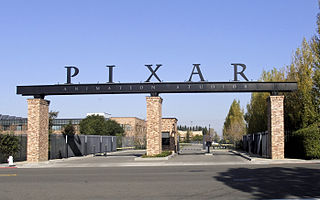
Pixar Animation Studios, known simply as Pixar, is an American animation studio based in Emeryville, California, known for its critically and commercially successful computer-animated feature films. Pixar is a subsidiary of Walt Disney Studios, a division of Disney Entertainment, a segment of The Walt Disney Company.
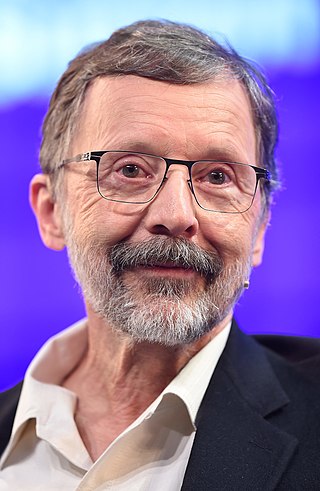
Edwin Earl Catmull is an American computer scientist and animator who served as the co-founder of Pixar and the President of Walt Disney Animation Studios. He has been honored for his contributions to 3D computer graphics, including the 2019 ACM Turing Award.

The School of Computer Science (SCS) at Carnegie Mellon University in Pittsburgh, Pennsylvania, US is a school for computer science established in 1988. It has been consistently ranked among the best computer science programs over the decades. As of 2024 U.S. News & World Report ranks the graduate program as tied for No. 1 with Massachusetts Institute of Technology, Stanford University and University of California, Berkeley.
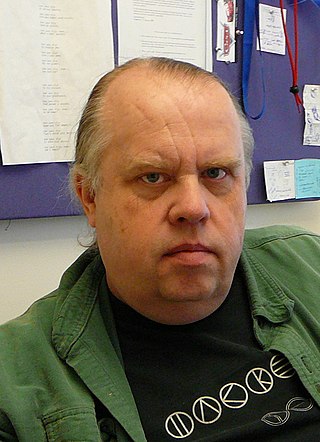
Thomas Douglas Selkirk Duff is a Canadian computer programmer.

Tin Toy is a 1988 American animated short film produced by Pixar and directed by John Lasseter. The short film, which runs for five minutes, stars Tinny, a tin one-man band toy, trying to escape from Billy, a human baby. The third short film produced by the company's small animation division, it was a risky investment: due to the low revenue produced by Pixar's main product, the Pixar Image Computer, the company was under financial constraints.
The Computer Graphics Lab is a computer lab located at the New York Institute of Technology (NYIT), founded by the late Dr. Alexander Schure. It was originally located at the "pink building" on the NYIT campus. It has played an important role in the history of computer graphics and animation, as founders of Pixar and Lucasfilm, including Turing Award winners Edwin Catmull and Patrick Hanrahan, began their research there. It is the birthplace of entirely 3D CGI films.
The Works is a shelved animated feature film, partially produced from 1979 to 1986. If it had been finished, it would have been the first film that was entirely 3D computer-animated. It included contributions from individuals who would go on to work at digital animation pioneers Pixar and DreamWorks Animation.

Knick Knack is a 1989 American animated short film produced by Pixar that was written and directed by John Lasseter. The short is about a snow globe snowman who wants to join the other travel souvenirs in a summer-themed party. However, the glass dome that surrounds him prevents him from doing so, thus leading to his many tries to break out of his snow globe. Knick Knack is Pixar's fourth short and the final short produced during the company's tenure as a hardware company. It was also the final Pixar short film released before the company's first feature-length film Toy Story.

Luxo Jr. is a 1986 American animated short film produced and released by Pixar. Written and directed by John Lasseter, the two-minute short film revolves around one larger and one smaller desk lamp. The larger lamp, named Luxo Sr., looks on while the smaller, "younger" Luxo Jr. plays exuberantly with a ball to the extent that it accidentally deflates. Luxo Jr. was Pixar's first animation after Ed Catmull and John Lasseter left the Lucasfilm Computer Division. The film is the source of Luxo Jr., the mascot of Pixar.
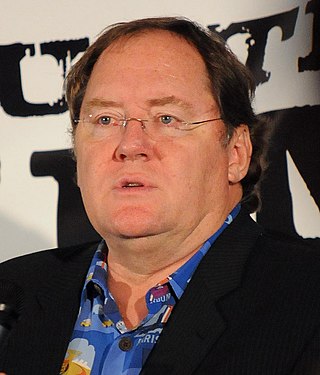
John Alan Lasseter is an American film director, producer, and animator. He has served as the head of animation at Skydance Animation since 2019. Previously, he acted as the chief creative officer of Pixar Animation Studios, Walt Disney Animation Studios, and Disneytoon Studios, as well as the Principal Creative Advisor for Walt Disney Imagineering.

The Adventures of André & Wally B. is a 1984 American animated short film produced by the Lucasfilm Computer Graphics Project, a division of Lucasfilm and the predecessor of Pixar. The short was groundbreaking by the standards of the time and helped spark the film industry's interest in computer animation.

Loren C. Carpenter is a computer graphics researcher and developer.

Alvy Ray Smith III is an American computer scientist who co-founded Lucasfilm's Computer Division and Pixar, participating in the 1980s and 1990s expansion of computer animation into feature film.

William "Bill" Reeves is a Canadian animator and technical director known for working with John Lasseter on the animated shorts Luxo Jr. and The Adventures of André and Wally B.

Alexander Schure was an American academic and entrepreneur. Schure founded the New York Institute of Technology (NYIT) in 1955. He also served as the Chancellor of Nova Southeastern University (NSU) from 1970 until 1985.
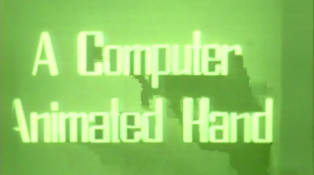
A Computer Animated Hand is the title of a 1972 American computer-animated short film produced by Edwin Catmull and Fred Parke. Produced during Catmull's tenure at the University of Utah, the short was created for a graduate course project. After creating a model of his left hand, 350 triangles and polygons were drawn in ink on its surface. The model was digitized from the data and laboriously animated in a three-dimensional animation program that Catmull wrote.
Jessica K. Hodgins is an American roboticist and researcher who is a professor at Carnegie Mellon's Robotics Institute and School of Computer Science. Hodgins is currently also Research Director at the Facebook AI Research lab in Pittsburgh next to Carnegie Mellon. She was elected the president of ACM SIGGRAPH in 2017. Until 2016, she was Vice President of Research at Disney Research and was the Director of the Disney Research labs in Pittsburgh and Los Angeles.

Jian Ma is an American computer scientist and computational biologist. He is the Ray and Stephanie Lane Professor of Computational Biology in the School of Computer Science at Carnegie Mellon University. He is a faculty member in the Ray and Stephanie Lane Computational Biology Department.
Nancy S. Pollard is an American computer scientist, roboticist, and computer graphics researcher. She is a professor in the Carnegie Mellon University Robotics Institute, where she heads the Foam Robotics Lab.